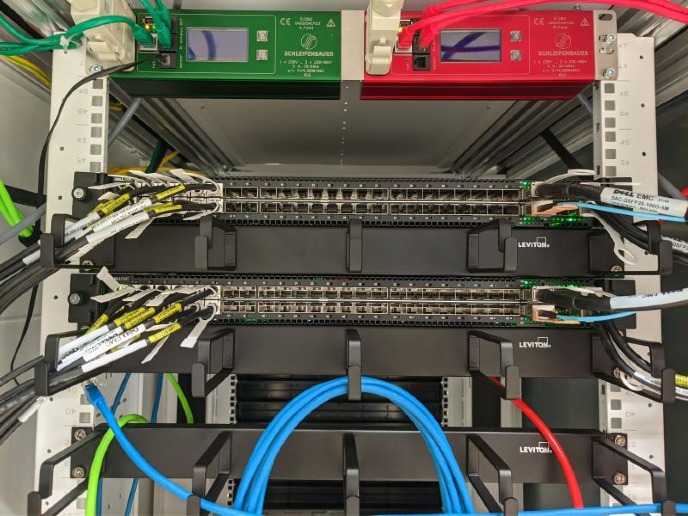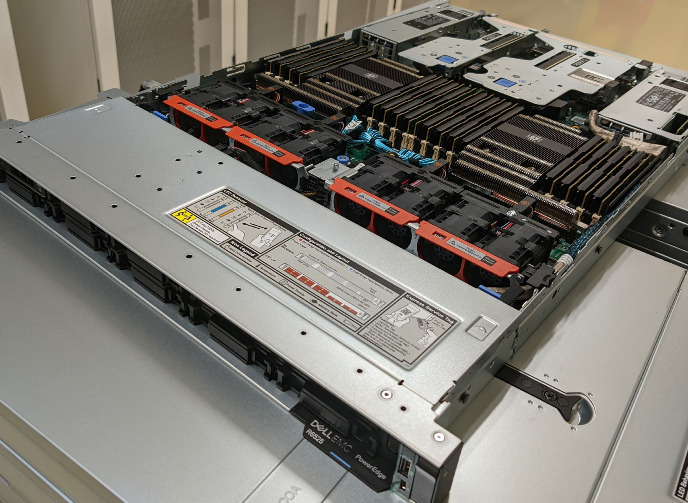Verbeterd rekencluster Hábrók geeft onderzoeker meer rekenkracht
In veel onderzoeksprojecten lopen wetenschappers van de RUG tegen de grenzen van het rekenen aan. Zij hebben te maken met steeds grotere hoeveelheden te verwerken data en benodigde rekenkracht. Voor het uitvoeren van grootschalige berekeningen waarbij een enkele computer niet krachtig genoeg is, kunnen onderzoekers aan de universiteit gebruik maken van het Peregrine-cluster. Dit rekencluster is na zeven jaar aan het einde van zijn levensduur en wordt binnenkort vervangen door een nieuw rekencluster dat de naam Hábrók krijgt.
Het Hábrók-cluster, geleverd en mede ontworpen door Dell en Bossers & Cnossen, wordt de komende maanden opgebouwd en getest in het Coenraad Bron Center, het nieuwe high performance computing (HPC) datacenter van de RUG. Na de testfase en migratie van de Peregrine-data naar Hábrók, zal het cluster naar verwachting in het laatste kwartaal van dit jaar officieel in gebruik genomen worden.


Veelvoud van rekenkracht en opslagcapaciteit
In de Noorse mythologie wordt Hábrók beschreven als de beste havik. Dit om te benadrukken dat het systeem een verbeterde versie is van het bestaande Peregrine-cluster.
Met de nieuwste hardware zorgt het Hábrók-cluster voor een veelvoud van de rekenkracht en een verviervoudiging van de opslagcapaciteit, dat gaat van 500TB naar 2PB. Elke node in Hábrók heeft zijn eigen processor, geheugen en opslag. De snelle lokale opslag zorgt voor een hogere verwerkingssnelheid en biedt een oplossing voor de knelpunten in het oude systeem. Elke node in het cluster krijgt meer geheugen en dankzij de speciale ‘big memory nodes’ met elk 4TB geheugen, kunnen meer geheugenintensieve berekeningen uitgevoerd worden. Een andere belangrijke upgrade zijn de moderne grafische kaarten (GPU's) die betere prestaties leveren, onder andere voor het verwerken van grote hoeveelheden trainingsgegevens ten behoeve van machine learning-modellen. Tot slot draait het Hábrók-cluster in een cloud-omgeving. Een groot voordeel hiervan is dat het onderhoud en uitbreiding van het cluster veel eenvoudiger en sneller gaat. Nieuwe nodes kunnen eenvoudig centraal uitgerold en toegevoegd worden en nieuwe functionaliteiten zijn op een makkelijke manier te implementeren.
Deze geavanceerde computerfaciliteiten zijn algemeen beschikbaar voor wetenschappelijk onderzoek aan de RUG en wordt gebruikt bij verschillende onderzoeksprojecten, bijvoorbeeld op het gebied van Life Science, Digital Humanities en Astronomie.
Meer weten?
Meer (technische) specificaties en informatie over het gebruik van het rekencluster vind je op de webpagina van High Performance Computing. Of kijk in Iris, het portaal met informatie over de universitaire IT-diensten. Hier vind je ook informatie over het aanvragen van toegang tot het rekencluster.
| Laatst gewijzigd: | 04 oktober 2024 12:42 |
Meer nieuws
-
04 juli 2025
RUG reikt verschillende prijzen uit tijdens Ceremony of Merits
De RUG heeft verschillende prijzen uitgereikt aan excellente onderzoekers en studenten tijdens de Ceremony of Merits op 4 juli 2025.
-
02 juli 2025
Relinde Weil herbenoemd als lid van Raad van Toezicht RUG
Het heeft de Minister behaagd Relinde Weil te benoemen voor een tweede termijn als lid van de Raad van Toezicht RUG.
